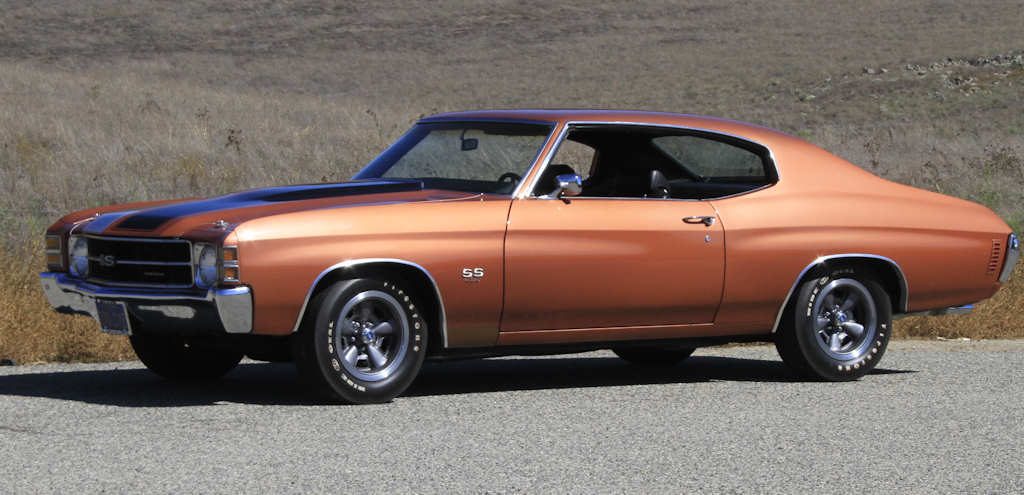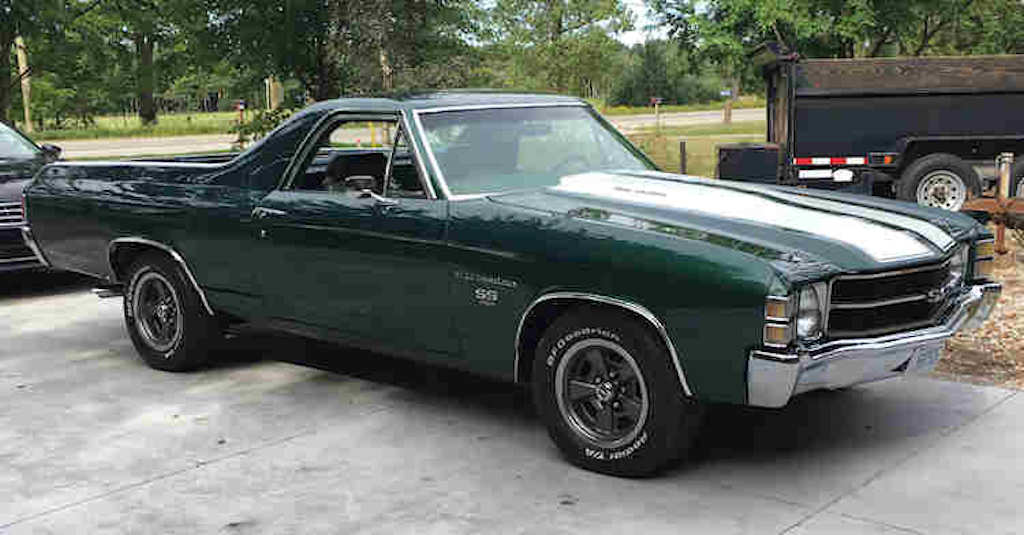1971 SS-Optioned Malibu
“And a little something for the faithful,” and “Malibu. How do you change America’s most popular mid-size car? Very carefully.” So said Chevrolet showroom promotional brochures of the day.
The 1971 model year saw some minor external body panel and interior design changes from the 1970 model year. Sport coupes and convertibles kept the wheelbase at 112-inches while 4-door sedans, sport sedans, station wagons, and sedan pickups (El Caminos) remained at 116-inches.
The 133/134xx series name changed from Standard to Chevelle. This name change from ‘Standard’ to ‘Chevelle’ causes a lot of confusion and can be misleading in many instances. For example, one might ask if you could get a Chevelle with a 454 engine. Well, yes and no depending on how the question is perceived. You could get a 454 engine in a Chevelle Malibu series but not a Chevelle Chevelle series. To be clear when referring to the Chevelle lineup as a whole, only Chevelle will be noted. When referring to the Chevelle series, Chevelle series will be specified; when referring to the Malibu series, Malibu will be specified.

The Malibu series remained with a 135/136xx VIN designation. The 138xx series has both the Concours Estate station wagon and the Monte Carlo sport coupe. Many Chevelle enthusiasts don’t recognize the Monte Carlo as a Chevelle and many Monte Carlo owners don’t think their cars are Chevelles; a point that will surely be discussed far into the future. Suffice to say the 13857 Monte Carlo was built at most Chevelle plants along with other Chevelle models built at that assembly plant.
The Monte Carlo was sequenced along with Chevelles; meaning a Monte Carlo could easily follow a Malibu sport coupe on the assembly line with the Monte Carlo being one sequence number higher than the Malibu sport coupe. The Monte Carlo has the same engine, transmission, rear end, and chassis components (springs, shocks, brakes, etc.) as any other Chevelle. Wheelbase is 116-inches, same as 4-door sedans, station wagons, and sedan pickups. Monte Carlos shared essentially the same dash assembly as a Z15-optioned or U14 Instrument Panel Gauge-optioned Chevelles with the exception of the added wood-grain appliqué. The Monte Carlo SS was a bit different from the SS Equipment option available with the V8 Malibu in the sense that the Monte Carlo SS option came standard with the 365 horsepower LS5 engine and there were no optional engines.
The 1971 model year saw the elimination of the Z25 option in favor of a single Z15 option. For 1971, and 1972 as well, the Z15 option was more of an appearance and handling option rather than a performance-oriented option as it had been in past years. Any one of four optional V8 engines could be ordered with the Z15 option. Both of the 350 Turbo-Fire V8s, the LS3 402 V8, and the LS5 454 Turbo-Jet V8 could be ordered. The new Z15 option also required one of the many optional transmissions. Although there are stories about 307 V8 Turbo-Fire Z15-optioned Malibus, not one to date has been verified with documentation.

The 1971 Z15 option continued the theme of a blacked out grille with minimal brightwork and the center of the grille was adorned with a white-lettered SS emblem. Since there was no real body rear panel, the Malibu sport coupe and convertible rear bumper saw the addition of SS letters in white centered on the bumper. The Z15-optioned sedan pickup also featured a blacked-out section on the tailgate between the two horizontal bright trim pieces with a centered SS emblem while the LS5-optioned sedan pickup has a centered SS 454 emblem.
Due to safety concerns the tail lamps were changed in the early part of the model year. The early model year inner tail lamp (with backup lamp) has a smaller white lens area and does not extend to the inner trim ring where the later tail lamp is much larger and extends to the inner trim ring. The size of the “bulge” area of the outer tail lamp also increased in the later version. Also note the early lamps, both inner and outer, have a silver trim around the outside face of both lamps where the later version did away with this.

